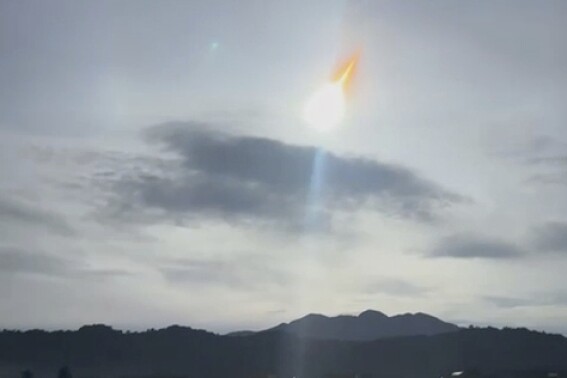The sun has seen its most active month for over two decades, with a monthly average of 215.5 sunspots being recorded in August.
This is the first time the average monthly sunspot number has exceeded 200 since September 2001, which was before the sun released the most powerful solar flare ever recorded, in late 2003.
Experts had predicted that August would only see half as many sunspots, indicating that the solar maximum is imminent, and it may be more active than anticipated, possibly bringing intense solar flares and coronal mass ejections.
Our sun has an 11-year-long solar cycle, during which its magnetic activity fluctuates. During the solar maximum, the sun's magnetic field is at its strongest and most active, leading to an increase in sunspots, and as a result, more solar flares and coronal mass ejections (CMEs).
We are currently in Solar Cycle 25, which was forecast to be weak, like the preceding Solar Cycle 24. However, it appears that as we approach the next solar maximum, this solar cycle may be one of the most energetic on record.
Sunspots are temporary, dark regions on the sun's surface caused by concentrated magnetic activity, which inhibits the flow of hot plasma and lowers their temperature compared to the surrounding areas. The sun's magnetic field becomes highly distorted during the solar maximum, creating more areas of intense magnetic activity and forming more sunspots.
These areas may release powerful solar phenomena including solar flares and CMEs, which can cause geomagnetic storms on Earth if they collide with our atmosphere. In May, an extreme G5 geomagnetic storm hit the Earth and sparked auroras across all 50 U.S. states and beyond. The X45 solar flare that was recorded in November 2003—three years after the solar maximum—was so powerful that it was detected by the Voyager probe at the distant edge of the solar system.
The large number of sunspots we are currently seeing may mean that similar extreme space weather may be heading our way in the coming years.
"When the sun hurls fast balls of magnetized chunks of its atmosphere at Earth there is likely to be a geomagnetic storm," Delores Knipp, a space weather research professor at the University of Colorado Boulder, told Newsweek. "CMEs erupt from the sun more often as we approach the maximum of solar activity. We are on the approach to solar cycle 25 maximum."
"The mass ejected from the sun carries some of the sun's magnetic field with it. When the magnetized matter from the sun collides with Earth's magnetic field and rams into the outer layers of our protective field, we often get a geomagnetic storm," she said.
September 2001 saw an average of 238.2 sunspots during Solar Cycle 23's maximum, while Solar Cycle 22's maximum brought as many as 284.5 sunspots during June 1989. The highest sunspot number in modern history was recorded in October 1957, where 359.4 sunspots were seen on average just before the maximum of Solar Cycle 19, while the highest number on record occurred in May 1778, with 398.2 sunspots during Solar Cycle 3.
The last solar maximum was in April 2014, and the next is forecast to occur any time between now and the middle of next year. We may already be experiencing the solar maximum, but we won't know until solar activity begins to drop off again.
Do you have a tip on a science story that Newsweek should be covering? Do you have a question about sunspots? Let us know via science@newsweek.com.
Disclaimer: The copyright of this article belongs to the original author. Reposting this article is solely for the purpose of information dissemination and does not constitute any investment advice. If there is any infringement, please contact us immediately. We will make corrections or deletions as necessary. Thank you.



